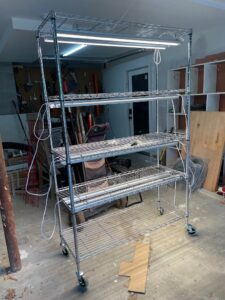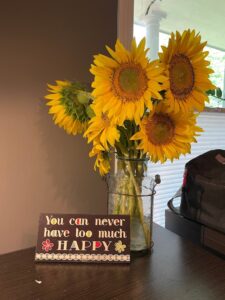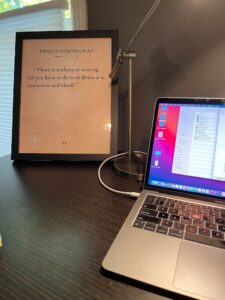So Hyped

Work is slow, but I have been busy. One of my essays was picked up for publication! Most of you know this already. You’ve read it and given me the most wonderful feedback. Thank you so much for sharing with me the emotions this essay provoked. I can’t always tell if I’m adequately conveying my feelings through my writing. In case you missed it, you can read it here. My editor is very excited about the book’s progress. The word count of a typical memoir is between 60,000 and 75,000. I can’t give a definite number, because I have some revisions to finish on a few of the essays that were most recently edited. I’m currently hovering at around a 40,000-word third draft. I’m eager to complete this project, so my editor and I have agreed to step up the pace just a little. I’m sending her 2-3 essays a week. I don’t want to jinx myself by setting a publishing goal, but I can’t help getting excited when K.K. and I discuss the big picture; a book layout for the essays I’ve completed and ones still in the hopper.
I’m also getting excited about next year’s cutting garden while logging some failures from this year. I did two sowings of sunflowers in late spring/early summer. I’ve had the worst time getting them to germinate, and of the ones that finally did, many of them have been attacked by critters (rabbits? snails? both?) I made one last ditch effort for fall sunflowers with a late sowing on the 14th. Many of those have germinated, so I’ve set up a grow tunnel over them and covered the hoops with bird netting. Fingers crossed. One of my most devastating losses happened in the perennial garden. My native purple coneflower has a disease called asters yellow that is spread by the aster leafhopper. Over 200 species of plants are susceptible to the disease. The blooms and foliage mutate into a twisted deformed mess. There is no treatment; the plant needs to be thrown away. Of course this is the year I’ve gone coneflower crazy, planting about 10 different varieties. Now I have to hope and pray that the disease hasn’t spread to the new coneflowers, zinnias, and dahlias. I keep my spirits up planning for next year. I heard this on one of my gardening podcasts last week, and it kinda blew my mind: “Failure is just research and development.” What a way to be optimistic.
Through all of the nerdy plant podcasts and books I’ve listened to or read over the last six weeks, I’ve discovered a plant classification called hardy annuals. There are many annuals and a few perennials that love a cool spring, and that is usually when the plants are available in garden centers. But our spring is so short, these plants fry before they ever get the chance to bloom. It turns out, many of those plants are winter hardy in zone 7, earning them the hardy annual classification. I’d already discovered this with the snapdragons I planted last year. They wintered over and have bloomed all spring. Here in zone 7, we can start those annuals that aren’t available at garden centers from seed in the late summer or early fall, then plant them in the garden six weeks before winter. This allows the plants to grow a substantial root system all winter that will help them last all spring and very early into summer. I will be starting my first batch of seed in a few days (most likely snapdragons, since they’re slow to germinate) and I am so freakin excited!! I will be documenting the process and giving regular updates.
Tim continues to humor but support me. I explained the ideal setup for seed starting, and he built me a growing rack complete with a grow light for every shelf! Forget the diamonds, I’ll take gardening gifts any day of the week. He’s also painted my new writing room AKA Fortress of Solitude, installed a new light fixture, and moved in some displaced bookshelves. I have lots of prints framed, but I haven’t decided how I want to display them yet, so my walls are still bare. Still, it does feel more like my space instead of a teenager’s old bedroom.
I was asked recently if Tim is excited about the progress I’m making towards a published book. The McKay men are notoriously even-keeled. Tim’s temperament is probably the biggest reason I’ve mellowed with age. I understand this about Tim and have adapted. But there are times I’m hyped about something and want him to be on my level, and I get frustrated when he seems apathetic. I feel like I don’t have his support. Then he does things without being asked like paint my new writing room, till a new garden, or build a rack for my seed-starting adventure. He makes a space for me where I can be creative, allows me time to write by doing the grocery shopping instead of expecting me to do it on my day off, and gives me an hour after work to enjoy my garden while he cooks dinner. My husband may not pump his fist and send a proud email to all of his friends with a link to my latest essay, but he spurs me on in his own subdued manner. I’ll take it.





